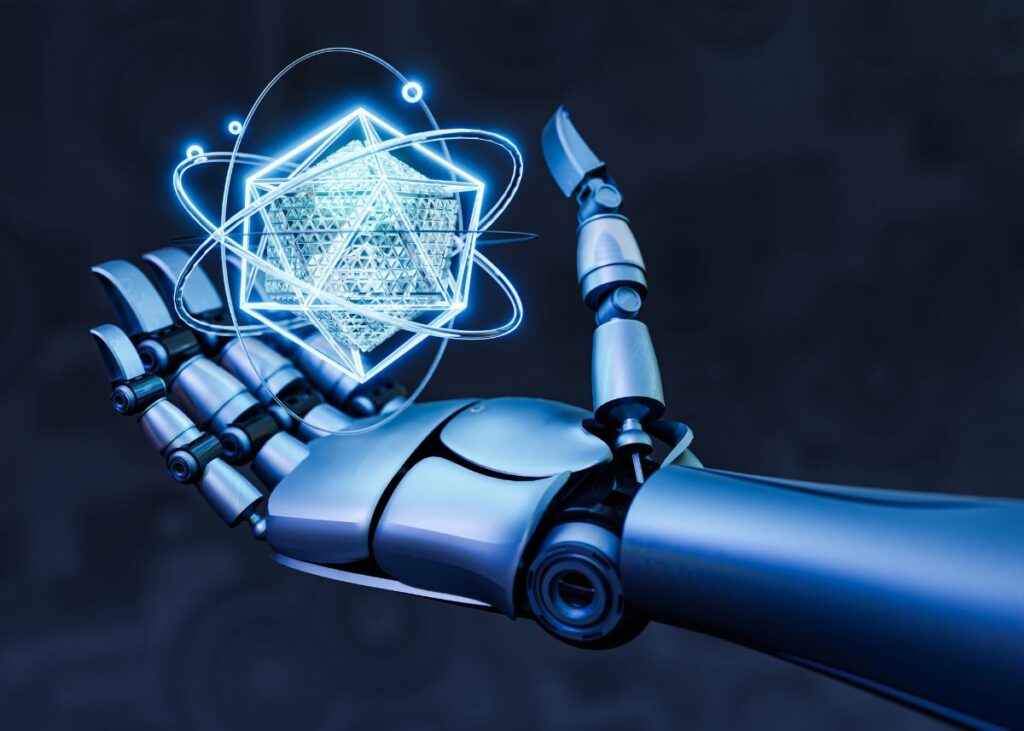
Hey there! Have you ever pondered upon what is being done globally in the manufacturing industry to ensure that it is ready for the new age? Well, the secret sauce is Generative AI. It is revolutionizing how manufacturers come up with their products, how they are made and how they are serviced. Therefore, it’s time to explore the incredibly exciting topic of Generative AI in the sphere of manufacturing. In this article, the practical application, the advantages proposed, as well as the ways to integrate it successfully are going to be described.
What is Generative AI?
Generative AI refers to the ability of the AI system to generate new content without having to rely on stimulus primarily on existing data. It is characterized by greater complexity such as neural networks and deep learning models to produce data that can mimic real-life situations. These scenarios can let Generative AI independently generate a great deal of products from generating the text, images, and so on to designing various products and optimizing even manufacturing procedures. Thus, with the help of Generative AI patterns in the existing data can be analyzed, decisions and fresh solutions can be generated, and future outcomes can be predicted with utmost accuracy. In other words, it serves as a complex help or tool that helps in the accomplishment of various operations and also contributes to constant advancements and optimization in different industries.
Use Cases of Generative AI in Manufacturing
Now, let’s talk about where Generative AI can be applied in manufacturing and why it is important.
Product Design and Prototyping: Just think about that you have a designer who is capable of designing hundreds of products in a matter of minutes. It is possible to consider that generative AI can contemplate thousands of possibilities in design and suggest more effective and creative solutions. It is as though people are having a virtual brainstorming session boosted on steroids.
Process Optimization: In manufacturing, probably nothing is as important as the ability to do things with the least waste possible. Generative AI can work to map processes related to production and then offer workable solutions on how such processes can be enhanced. With its help, it is possible to determine such inefficiencies as well as decrease the amount of wasted materials and increase the general rate of work. It is like having your production consultant who can easily identify ways to make you perform better.
Predictive Maintenance: This is the manufacturer’s worst headache, or perhaps the politician’s worst enemy, depending on how you look at it. The generative AI can forecast the time when the machines are likely to break down or need fixing up and this will be recommended before such a time comes. Similar to a crystal ball for machinery, you will surely always be able to prepare for the worst.
Supply chain management: Supply chain management is like tossing- time you have to keep all balls in the air. The opportunities are coming from the generative AI, for example, it can forecast demand, manage inventory, and also schedule delivery time. It’s the one-stop elixir for the multi-tasking dynamism helping you never drop Next up is a discussion of where Generative AI can be deployed in manufacturing and why this is the case.
Advantages of Generative AI in manufacturing.
Ok, so we have learned what Generative AI is capable of, but surely, it cannot be all bout ‘them’ and none about ‘us’? Here are some key benefits: Here are some key benefits:
Enhanced Innovation
The use of generative AI in generating concepts and designs lets free flow of ideas and very quick prototyping of designs in manufacturing brings a revolutionary change in innovation. It releases the manufacturer from the chains of conventional design possibilities and opens up a world of opportunities. The use of algorithms compiling the design, and then testing the solution means that manufacturers can find unique solutions which a human designer can miss. This capability ideates and enables organizations to create sophisticated omnichannel products that meet clients’ unique wants.
Cost Reduction
This paper identifies cost optimization as one of the most persuasive benefits of applied Generative AI in manufacturing. This approach of Generative AI is beneficial in design and manufacturing since it can enhance efficiency and decrease wasted material. Computer programs may be used to search through massive databases of combinations of design parameters and select the design configuration that would yield the most efficient use of materials in producing structures. Also, using AI-based predictive maintenance, it is possible to predict machinery failures and avoid interruptions of production processes.
Improved Quality Control
On the industry side, consistency and quality are very important when dealing with the manufacturing of products. Recall that in generative AI, problems such as defects are identified earlier during the production process. The application of AI in manufacturing systems can include the real-time analysis of the sensor data collected by machines; this analysis is followed by the identification of changes in the typical parameters and by appropriate reactions before the defects worsen. Such a strategy not only guarantees that every product is of superior quality but also optimizes the manufacturing process since it reduces cases of having to redo the entire process.
Faster Time-to-Market
The business climate of today dictates that the ability to get a product to market as quickly as possible gives one a significant competitive advantage. Generative AI development services improves productivity by performing repetitive activities such as the generation of a design hierarchy and subsequent simulations. The AI for design creativity and innovation analysis provides relevant and multiple design solutions in a short time and thus reduces the time of the product development cycle while retaining the quality of the products. Moreover, through predictive analysis utilizing artificial intelligence, it is possible to predict changes in market demand to ensure the manufacturer adapts production forecasts to consumers’ shifts in preferences and captures new market opportunities effectively.
Enhanced Sustainability
Cognitive AI improves the efficiency of resource usage in manufacturing and lessens its negative effects on the environment. Also, manufacturers can implement the principles of sustainable design like decreasing the weight of the structures and optimizing production materials and energy usage in various stages of manufacturing. AI helps saving resources in production while at the same time, it enables compliance with laid-down regulations on sustainable production practices as well as meeting consumers’ demands on environmentally friendly production processes.
Empowered Workforce
Unlike other advancements that minimize the role of human workers, Generative AI enhances manufacturing teams’ performance. Traditional machine work takes time and consumes the qualification of experienced staff; therefore, by utilizing AI technology, top experts can work on developing and implementing effective tools instead of completing the boring paperwork or data analysis. The partnership approach improves on the knowledge share to depict the steady procedure of progressive improvement to suit intricate market relations and innovation.
Steps to Implement Generative AI in Manufacturing
Well, good for you now that I have made you see the benefits of Generative AI. What next? Here are the steps to get you started: Here are the steps to get you started:
Identify Your Needs: The intelligent approach is to first identify what domains Generative AI can create the most value for. It may be product design and/or process improvement and/or predictive maintenance. Thus, an understanding of your goals shall assist you in managing your approach properly.
Gather Data: To be precise, it can be mentioned that generative AI is all about data. Paperwork generated by your production processes, existing machinery, and supply chain are other sources of bespoke data collection. They said the more of these inputs, the better the outputs where the AI will be clicking.
Choose the Right Tools: Thus, there are many Generative AI tools available for use, and one is requested to select those, which would be most appropriate in the given context. Opt for tools that can easily be plugged into the already established systems and have an easy-to-use interface.
Pilot and Test: The last thing we would want is to apply huge risks; therefore, initial trials of the strategies and plans should be made through pilot projects. Test Generative AI initially on a limited sample basis to check out results that its incorporation will yield. Altering, based on the results of the completed inquiries.
Scale Up: If you are more certain of the structural configuration of your Generative AI, then go ahead and expand. Get the maximum results through its usage in the entire production cycle or in the supply chain information system. However, it is not a race for a few hours and so the success key is to do it systematically.
Conclusion
AI is becoming generative in the manufacturing sector where it is taking innovation, productivity, and quality to higher levels. Whether you are developing a new product creating the new IT revolution, or creating the supermarket supply chain system, Generative AI is ready to assist you. Thus, are we going to bring this groundbreaking technology and push your production line up to the next level? Yes, Ladies and gentlemen, the future of AI in the Manufacturing Industry is already here and it is driven by Generative AI technologies.
Are you going to start yourself into Generative AI and accelerate your manufacturing operations? The possibilities and the fun can only be described as having just begun.



















































